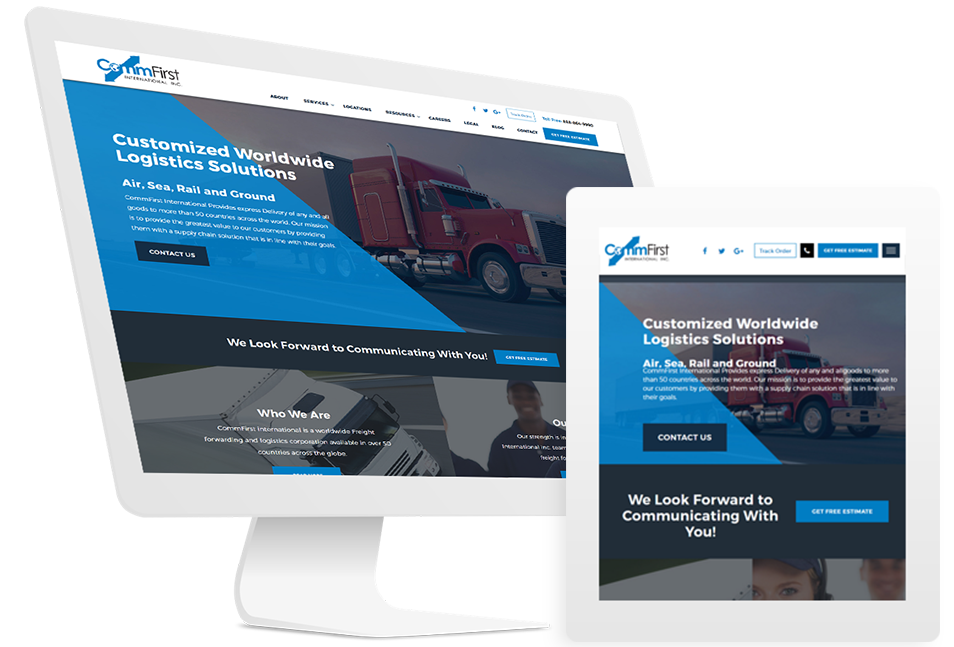Leading Tips for Producing an Impactful Website Design That Converts
To attain this, one must think about a range of aspects, consisting of recognizing the target audience, focusing on user experience, and enhancing for mobile systems. The strategic use of compelling call-to-actions and a well-defined visual power structure plays an important function in directing individuals with their journey.

Understand Your Target Audience
Understanding your target market is fundamental to effective internet site style, as it lays the groundwork for developing an appealing individual experience. Identifying that your individuals are, including their demographics, choices, and habits, enables developers to tailor the web site's content, format, and functionality to fulfill particular demands.
Carrying out thorough market study is important in this process. Surveys, meetings, and analytics can offer valuable insights right into individual assumptions and pain factors. By compiling this information, designers can produce user identities that represent various segments of the target market, guaranteeing that layout decisions are educated and appropriate.
Furthermore, recognizing the target market assists in selecting appropriate layout elements such as shade systems, typography, and imagery that reverberate with users. A website that speaks directly to its target market cultivates a feeling of link and trust, motivating longer brows through and higher conversion rates.
Eventually, a user-centered strategy to website style not just boosts customer complete satisfaction yet additionally supports business goals by driving involvement and commitment. By focusing on the needs and preferences of the target audience, a website can effectively serve its purpose and accomplish preferred results.
Prioritize Individual Experience
To improve the general performance of an internet site, focusing on customer experience (UX) is essential (Website Design). A well-designed UX ensures that visitors can navigate the website easily, locate details swiftly, and involve with content meaningfully. This causes boosted individual fulfillment and higher conversion rates
Begin by executing intuitive navigation. Menus should be logically structured, allowing users to locate key areas of the website with minimal effort. Uniformity in layout components, such as shade systems and typefaces, cultivates knowledge, which is critical for maintaining user involvement.
Additionally, take into consideration the filling speed of your website. A hold-up of just a few secs can cause significant drop-offs, as users are much less likely to wait for a slow-loading web page. Enhancing images and maximizing code can boost performance and retain site visitors.
Moreover, clearness in content discussion is vital. Usage succinct, appealing language and break up text with visuals to boost readability. By prioritizing individual experience, you not just produce an extra pleasurable setting for visitors but additionally strengthen your brand's trustworthiness. Inevitably, a concentrate on UX is a financial investment in the long-term success of your web site.
Enhance for Mobile Tools
Enhancing for smart phones is important in today's electronic landscape, where an enhancing number of individuals gain access to web sites with mobile phones and tablet computers. A mobile-friendly style not just improves individual experience however likewise plays a considerable function in enhancing online search engine rankings. To accomplish this, it is important to embrace a responsive design that instantly readjusts to numerous screen sizes and positionings.

Filling rate is one more important aspect; mobile individuals are usually less client and expect fast access to details. Enhance images and utilize web browser caching to improve efficiency. Test your internet site on multiple devices and screen resolutions to recognize and correct any kind of prospective use problems. By focusing on mobile optimization, you make sure that your website stays competitive and successfully engages a wider target market.
Usage Engaging Call-to-Actions
A site's efficiency often depends upon its capability to assist site visitors toward desired actions, making engaging call-to-actions (CTAs) necessary parts of design. CTAs serve as the essential wikipedia reference factors that route customers to involve with the site, whether that means purchasing, signing up for an e-newsletter, or downloading and install a source.
To develop reliable CTAs, quality is paramount. Use concise language that clearly communicates the action you want the read user to take. Phrases such as "Start," "Join Free," or "Shop Now" not only convey urgency but also eliminate ambiguity. The placement of CTAs is equally essential; they ought to be tactically positioned throughout the web page to ensure they are quickly visible, particularly in high-traffic areas.
Moreover, the design of CTAs should stand apart without being noticeable. Employ contrasting colors and clear fonts to guarantee they record interest. Furthermore, consider using directional signs, such as arrows or images, to guide customers towards these buttons. By focusing on these components, services can dramatically improve user involvement, driving conversions and inevitably accomplishing their site's goals.
Concentrate On Visual Hierarchy
Reliable site layout depends heavily on a well-structured aesthetic pecking order that overviews users with content flawlessly. By organizing aspects in a manner that prioritizes details, designers can improve customer experience and facilitate decision-making. This includes utilizing size, shade, contrast, and spacing tactically to draw interest to one of the most important parts of a website.
Using bigger fonts for headings and subheadings establishes a clear distinction in between various sections, allowing individuals to check material easily. Additionally, utilizing different shades for switches and calls-to-action can capture individual interest and urge communication. Whitespace is another vital part; it protects against clutter and enables individuals to concentrate on crucial messages without distractions.
Images and graphics ought to match the message while additionally sticking to the established hierarchy, reinforcing the overall message (Website Design). Consistency in style aspects, such as shade systems and typography, further reinforces the aesthetic power structure, making Continued navigating intuitive

Conclusion
In final thought, reliable web site design demands a detailed understanding of the target audience, prioritization of user experience, and mobile optimization. Eventually, a well-executed website layout offers as a vital component in driving user activities and achieving service objectives.